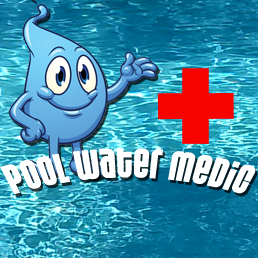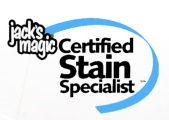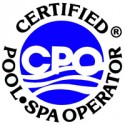What Kind Of Algae Are You Growing
ByPool and hot tub water need to be properly sanitized in order to prevent the growth of algae. Algae will grow and thrive in well lit, shallow warm water that isn’t properly sanitized. The algae feed on sunlight and the minerals in the water. The waste products released from algae then become food for dangerous bacteria and germs.
To prevent algae from growing within your pool water, you’ll need to keep it properly sanitized. If you fail to sanitize your water on a regular basis, there’s a good chance algae will start to grow in the shallower areas of the pool that receive the highest amount of sunlight throughout the day. However, sometimes even the most well kept pools and spas will become subject to the growth of algae.
There are three types of algae that are most common for home owners: yellow algae, black algae, and green algae.
Black algae is the worst form of algae that a pool owner can contend with. It is dark blue-green in color. Early signs of this type of algae are the appearance of black, ‘dirt like’ specks on the bottom of the pool. It will grow rather slowly; the black specks at the bottom of the pool will expand at a very slow rate. However, once the tiny black dots become a little bit larger, the algae will grow quite rapidly and expand along the bottom of your pool.
Black algae will not only expand across the bottom of your pool, it will also grow deep into the plaster and concrete. If left unchecked, black algae can cause severe structural damage to your pool. The character traits that make black algae the most difficult to contend with are that it can grow and thrive at any depth of water and can thrive in low light conditions. As with other types of algae, it can be prevented through the use of algicides and sanitizers.
Green algae is the most common form of pool algae. It appears first as a green slime on the pool and spa surface areas. While the visible algae can be easily removed with a pool brush, you must properly sanitize the water to keep it from growing back immediately – the only way to stop green algae altogether is to use chemicals. This algae grows extremely fast and must be killed as quickly as possible otherwise it will overrun your pool in a very short period of time.
Yellow algae grows much slower than green algae but is more difficult to remove. Similar to green algae, you can remove the surface algae with a brush and expose the under layer of algae to the effects of chlorine and algicides. The most effective method for eliminating yellow algae is to perform superchlorination.
Most types of algae can be brushed off smooth-surface pools rather easily (such as fiberglass). Plaster pools are more prone to stubborn algae as the growth will work its way into cracks and crevices – if you have a plaster pool, it’s very important that you maintain an anti-algae regime! Black algae in particular is the most difficult to remove from plaster pools as it will burrow into crevices and cracks more speedily than other types of algae. It will also form a hard shell around its exterior to protect itself.
If your pool becomes overrun with algae and you want to attempt to clean it without hiring a professional, you can try superchlorination (also known as ‘shocking your pool water’). By adding excessive amounts of sanitizer into your pool water, you can sometimes kill off stubborn algae and bacteria. If all else fails, the best method for eliminating algae from your pool is to hire a certified pool operator!
Article Source: http://EzineArticles.com/6102381















